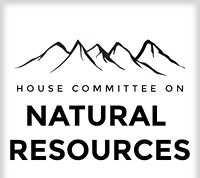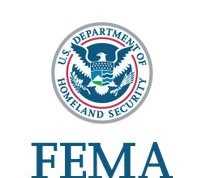When it comes to owning a home, there is little doubt that one of the things that might keep you up at night is undergoing a natural or accidental disaster that dramatically impacts the value of your home.
While you might think that a fire or flooding is the most likely thing to impact the value of your wonderful home, truth is that that vast majority of major disasters occur by weather, something that is impossible to plan for and impossible to control.
Specifically, hail seems to be the most common thing when it comes to homeowner’s insurance claims.
In fact, in many states, the occurrence and extremity of natural disasters has led to a dramatic spike in premiums over the years. For example, quick analysis of the National Association of Insurance Commissioners details how those living in Oklahoma and those living in Colorado saw the cost of their coverage rise 79 percent and 75 percent respectively from the year 2007 to the year 2016.
That means that the cost of mortgage insurance nearly doubled in price in under 10 years!
Due to the price of what your premium is quite likely to be, paired with the importance that comes with making sure that your home is covered as comprehensively as possible for whatever may come your way, it is very important to make sure that you are able to find the best mortgage insurance available to you.
Here are some important things to consider:
Make sure to find a good insurer
With every insurance company known to man offering great coverage at low prices, it can be hard to know how to separate the bad, from the good, from the great. Luckily, there is one fantastic way to tell what an insurance company is like to work with, and that’s how well they handle their claims.
Overall, the lower rated insurance companies tend to experience a greater percentage of customers who don’t agree with damage estimates and feel that the final settlement they got after damage occurred was too small.
Finding this information may take a little leg work on your part, but it is certainly worth it when it comes to making sure that you are locked in with a fantastic insurer. One of the best ways to research a specific insurance company that you are thinking about going with is to search for online reviews. Trust us, if there have been a lot of past customers unhappy with the amount of their claim, you’ll be able to figure that out by reading the company’s Yelp page.
Another great way to find an affordable and honest insurer is to compare quotes in your area. Some state insurance departments offer insurance comparisons so that you can see how companies stack up against each other. Major red flags are if one company’s quote is far lower than the average, or far higher.
How to get the right coverage
Since homeowner’s coverage doesn’t have requirements in any state and allows lenders to choose how much they are willing to cover, it could leave you with being over insured or underinsured. Many homeowners think that they need to get high coverage that is almost the same amount as the home’s market value, and that isn’t a good choice as the home’s value includes the land as well.
The best way to know how much insurance coverage you need is to estimate the cost of paying labor workers and the materials you will need to get to replace what’s damaged in your home or what will need to be rebuilt after a catastrophe.
Consider the add-ons
Homeowners insurance coverage, just like auto insurance, also includes add-ons and other options that will make the cost of your insurance a bit pricier than other policies. That’s why it’s important to check which insurance is offering extra coverage with the basics without increasing the price. When you begin price shopping, don’t risk choosing insurance that is offering a reasonable price over another insurance that is giving you a deal that’s a little higher but includes add-ons and extra coverage.
Some of the add-ons to look into when price shopping are sewer backup, coverage for hail, earthquake, and windstorm damage, and stolen or damaged home contents including additional valuables such as jewelry. It’s crucial to add an inflation protection policy that features inflation guard coverage, as it will increase the amount of coverage annually on your home.
Raise you liability coverage
Homeowners liability insurance is needed to protect yourself from any lawsuit against you for accidental injuries or property damage inside and outside your home. Since the homeowner’s insurance liability coverage protects investments, real estate, and personal property, it’s recommended to increase your coverage, as your assets will be more than $100,000.
Bodily injury liability includes negligence if someone slipped on your sidewalk that was caused by rain or snow. If a lawsuit is filed against you for an injury or accident, it will include medical coverage such as surgery, dental work, x-rays, ambulance, and all kinds of hospital costs.
As for property damage, it covers the costs of any damage you do to someone else’s property. For example, if you are playing football or tennis outside with your son and you or your son accidentally don’t catch the ball, which leads to it hitting your neighbors window and breaking an object inside their home as well. The homeowners liability will pay for both the damaged window and the object that broke inside the home.
In case of an injury on your personal property, the lawsuit and medical bills will add up very quickly and will easily cost you a lot more than what many insurance policies offer. Property damage is also extremely pricey if you accidentally break someone’s piece of art.
Be careful when you begin to set a personal liability coverage limit since many policies come with $100,000 insurance coverage and the rest of the lawsuit cost and medical bills will be on you. It’s often recommended to boost your limit to $300,000 but the best way to protect yourself and your home is to buy coverage that equals your home assets.
Cover your home with floor insurance
Flood protection in homeowners insurance policies will only cover it if a piping system in your home breaks, and not against flooding happening from the outside of your home. Flood protection is offered by a separate insurance called National Flood Insurance, which is by the federal government, to insure your home even if it’s in a low-risk area.
Depending on the area you live in, your flood protection coverage premium could be less than $400 if you live in a low to moderate risk area, while higher risk areas pay an average of $700 annual premium.
Other ways to lower your premium
There are several ways to lower the cost of your insurance premium that is becoming a favorite among other homeowners.
- Increasing your deductible always means lower premium with any type of insurance, and it can easily bring it down to 20% off.
- Making some updatesin your home will easily save you a lot of money. By upgrading and replacing things that could cost you a fortune if they break can decrease your premium. For example, upgrade your home with water detection sensors or gas-leak detectors, check your plumbing system and replace it if you have to, and place an impact-resistant roof to lower your premium.
- Getting coverage from the same insurance is a great way to save money and receive deals. Some auto coverage companies offer homeowners insurance that will save you more than 20% on both coverages. Look into auto insurance companies that provide bundle coverage.
How to successfully submit your mortgage insurance claim
One important thing to keep in mind is that the number of claims that you make in a certain amount of time will ultimately increase your premium. It could even cause your insurer to reject a renewal of your policy.
The rule of thumb is that more than three claims within two years is going to prove that you are more likely to make a claim and therefore less attractive in the eyes of insurance companies.
Typically, you don’t want to make a claim unless you really have to. If something has happened that will cost you a couple hundred, or even a couple thousand dollars, you may want to consider paying for repairs or replacements out of your own pocket. Even though the financial hit may sting a bit in the short term, you will likely be helping yourself save quite a bit of money in the long term as a result of avoiding an increase in your monthly premium.
On top of that, filing a small claim will keep you from benefiting from possible discounts that you could get from remaining claim free.
If you are unsure about what to do, it is never a bad idea to actually call your insurance provider and ask them for their advice on the matter.















